Mallwyd, North Wales
Description and photos from a visit by M. Stone on 16 April 2007
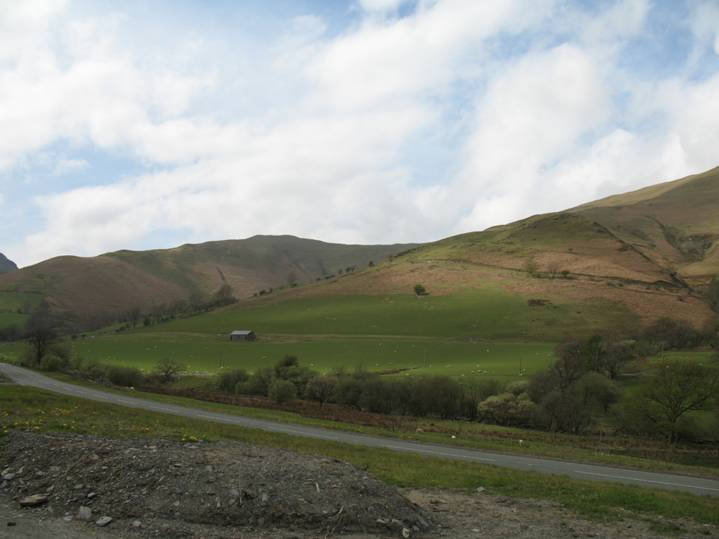
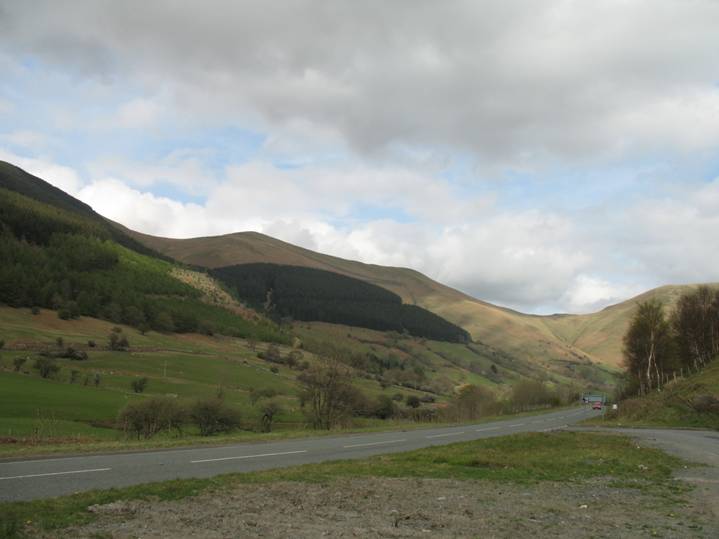
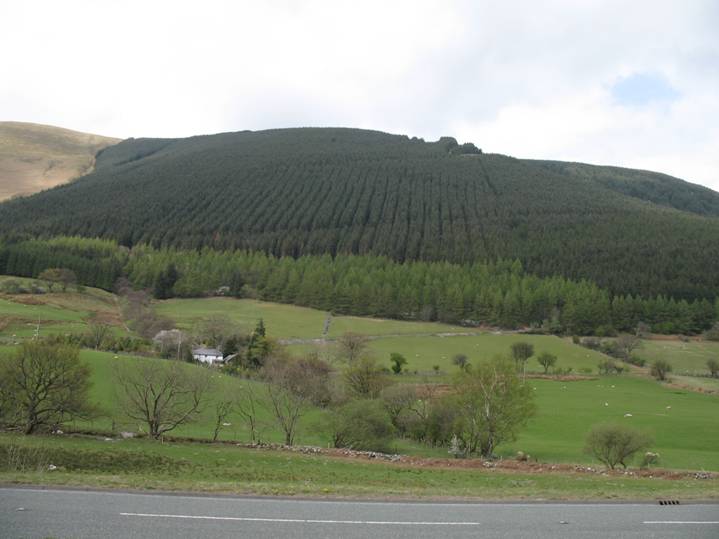
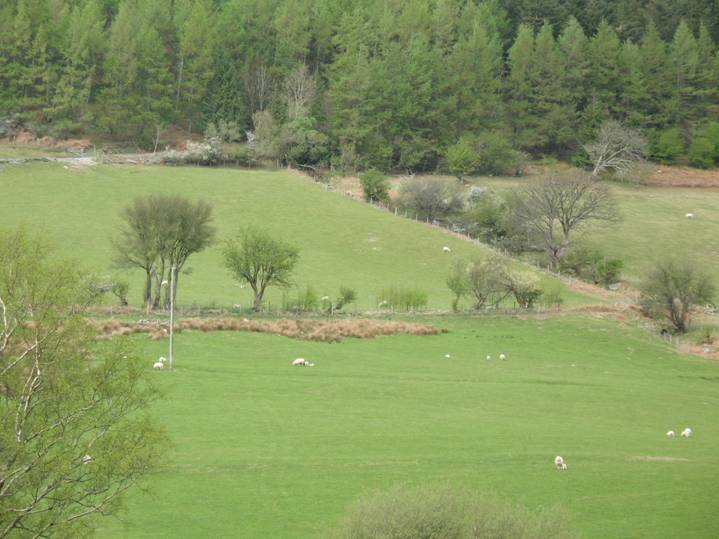
Views along the nine or so miles of road from Dolgellau southeast to Mallwyd, on the A470. Mallwyd is just inside the eastern boundary of Snowdonia National Park, at the intersection of A470 and A458. It is a very small rural community (a few buildings at a roundabout, surrounded by sheep ranches, meadows, woodland and farms) in the Dyfi or Dovey Valley, near the Dovey River.
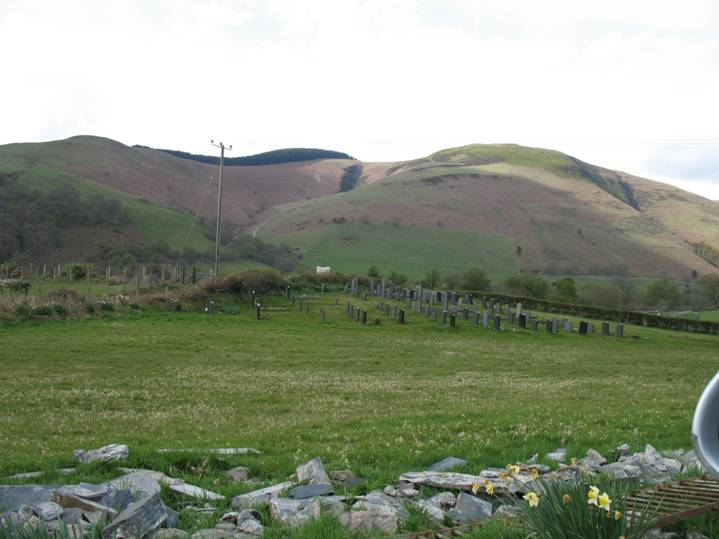
This is the “new” cemetery at Mallwyd, on the western side of the A470.
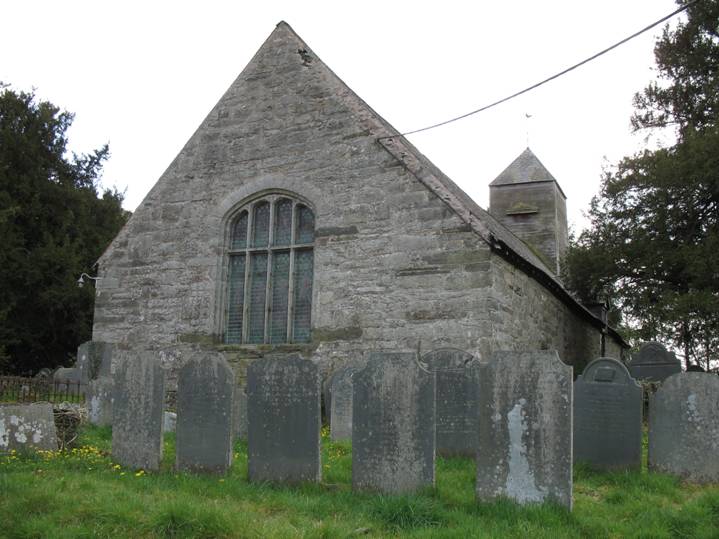
And this is the “old” cemetery surrounding the Mallwyd parish church, on the eastern side of the A470.
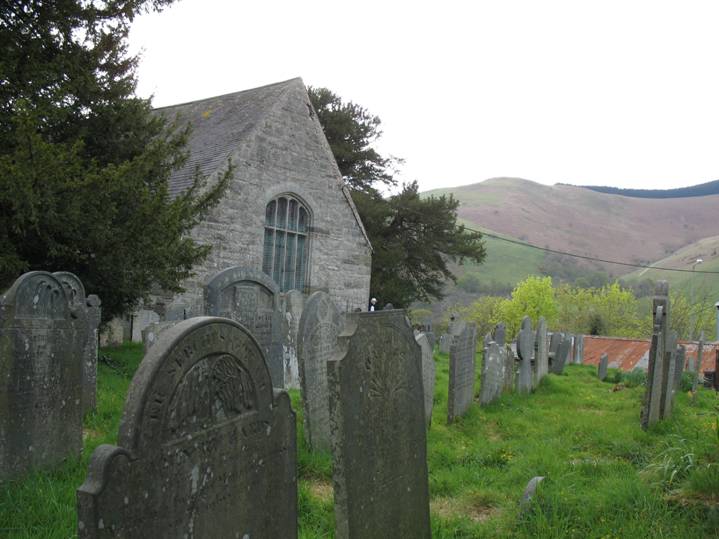
The monuments in the churchyard are old, large, and many. I assumed they are made out of native slate. Most of the inscriptions are in Welsh. Many people with the surnames of ROBERTS and HUMPHREYS were buried here in the 1800’s. I was definitely standing on the land of my Welsh fathers and mothers.
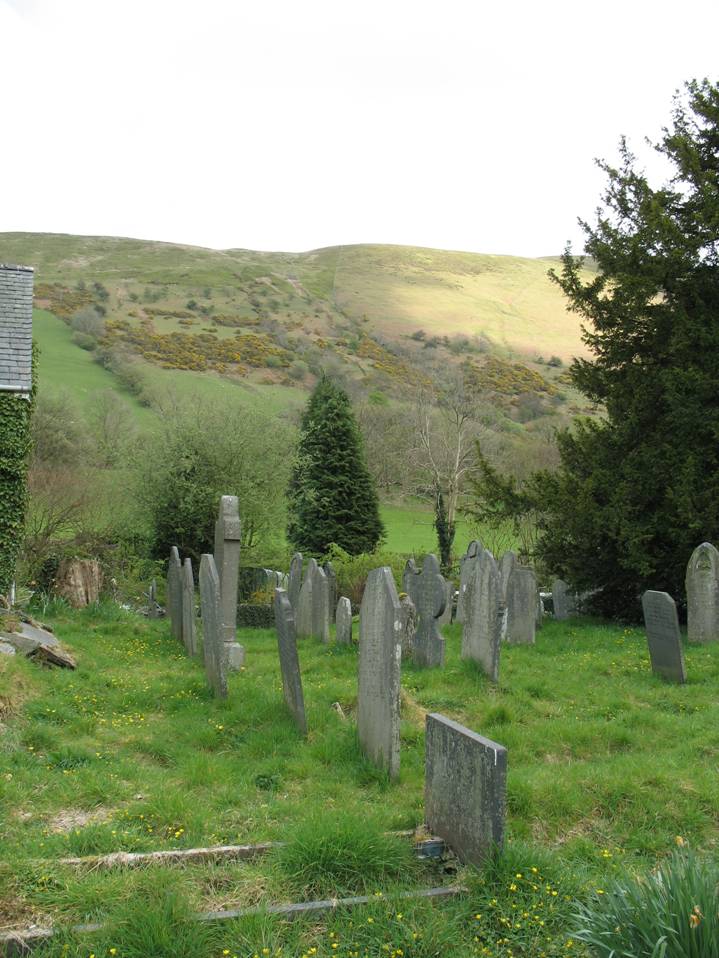
The church itself is on a rise above the road, near a small collection of old cottage residences, all “overhung on the north by the mountains of the Arran range” (wrote sojourner George Borrow in his book, Wild Wales, when he visited there in 1858).
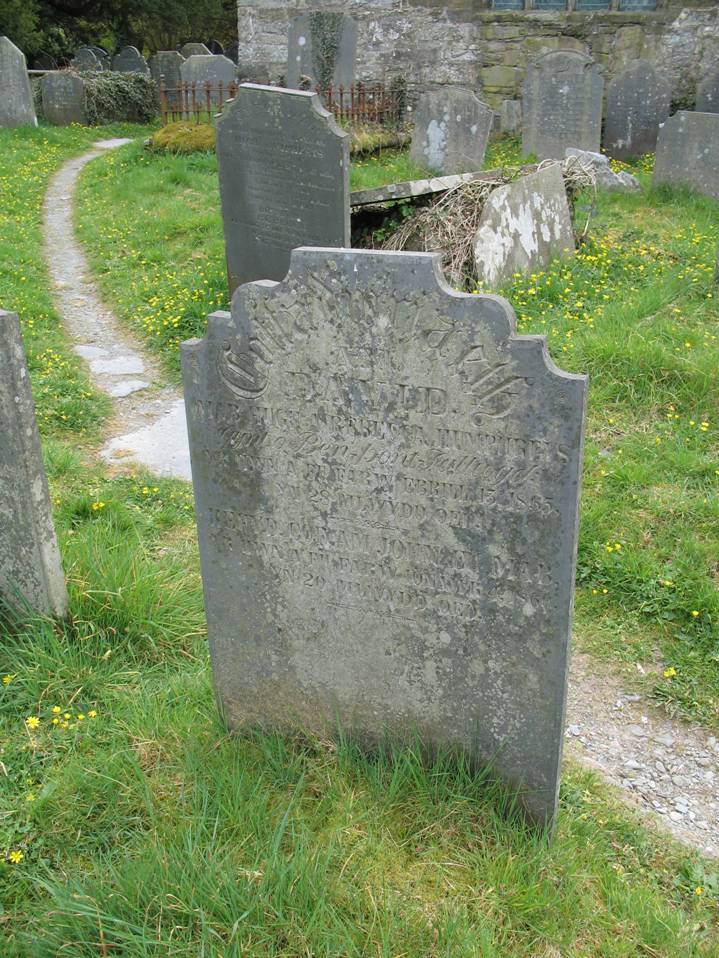
The ground is rough and uneven, the gravemarkers tilt in all directions, and some of the vaults have deteriorated.
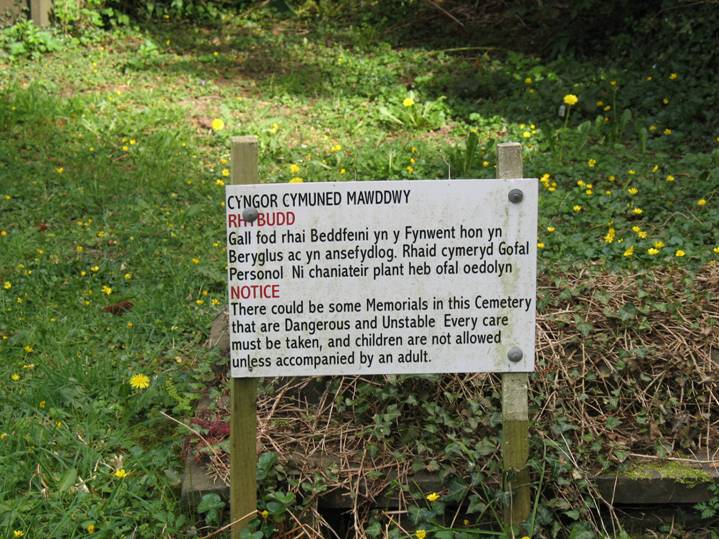
Genealogists, mourners, and worshippers beware.
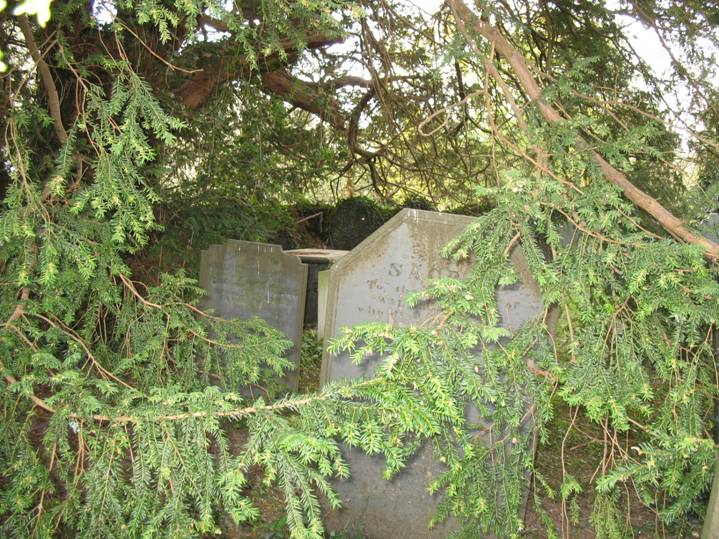
The trees have swallowed a few gravemarkers.
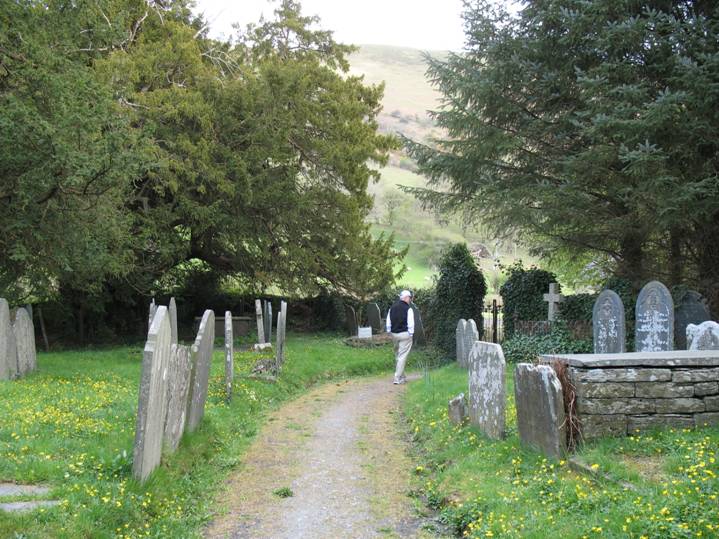
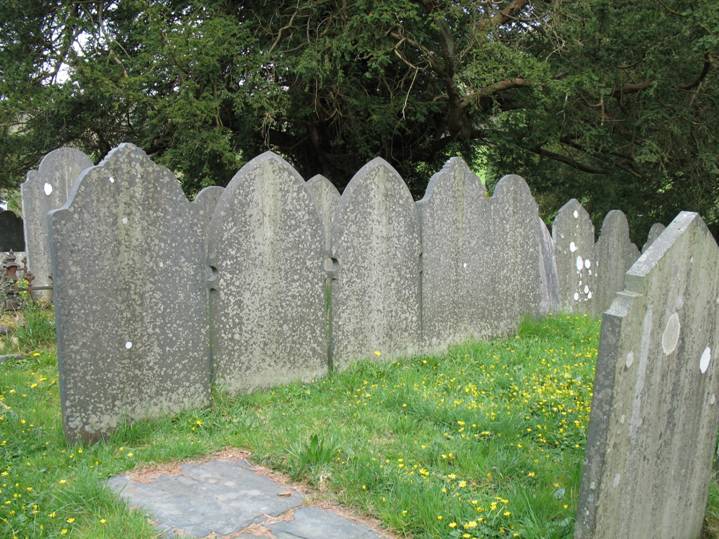
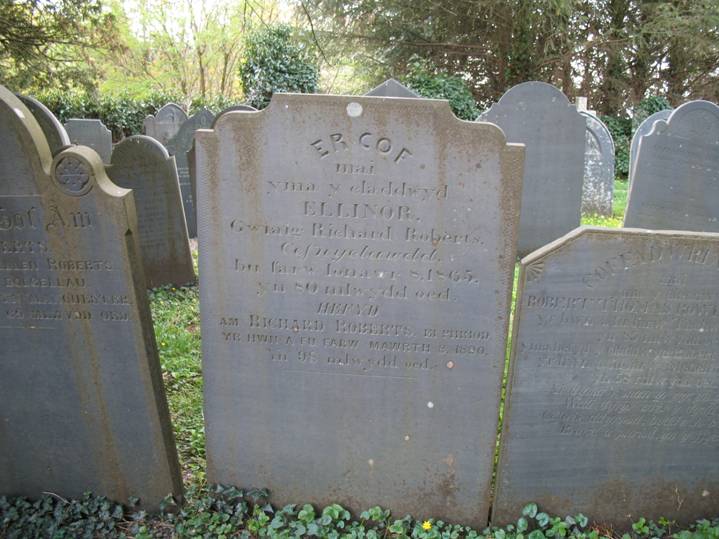
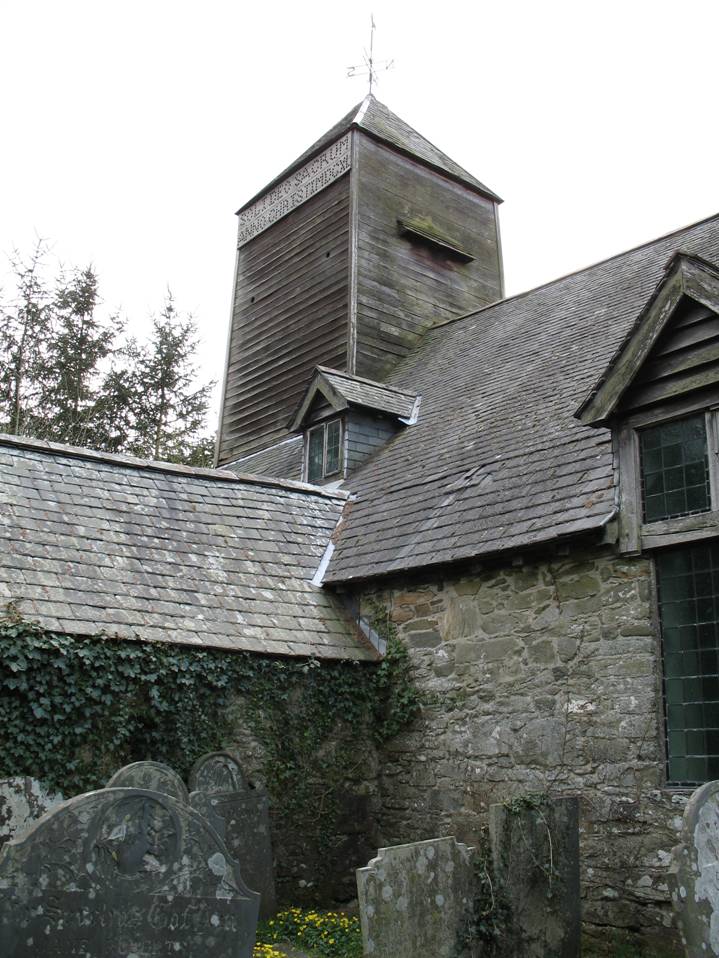
The Mallwyd church was the seat for the parish (Church of Wales), and was built on the border between and oversaw the two counties of Merioneth and Montgomery. The original church there had supposedly been founded by St. Tydecho in the sixth century and the present building supposedly dates from the 1300’s, but a sign on the steeple is dated 1601. According to local traditions, the original location of the church was determined “in obedience to supernatural warnings.” As far back as the 1860’s its churchyard had been famous for its handsome yew trees.
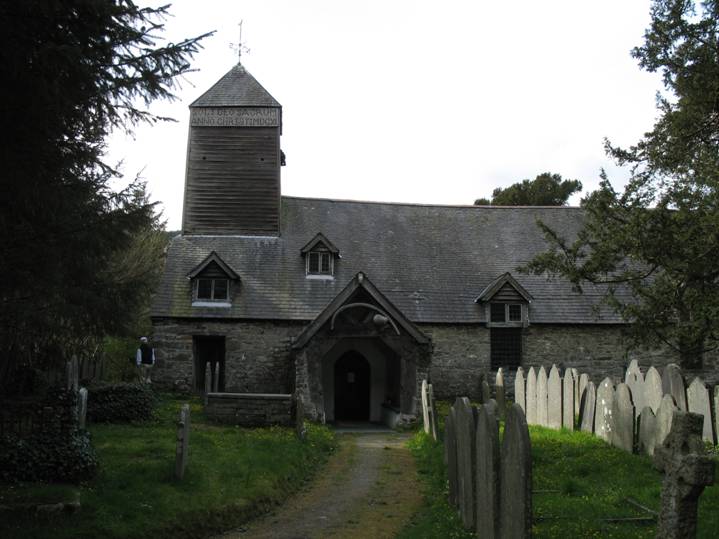
The sign reads “Soli Deo Sacrum / Anno Christ XMDCXI [1601]” Did my ancestors walk this same path on Sundays long ago?
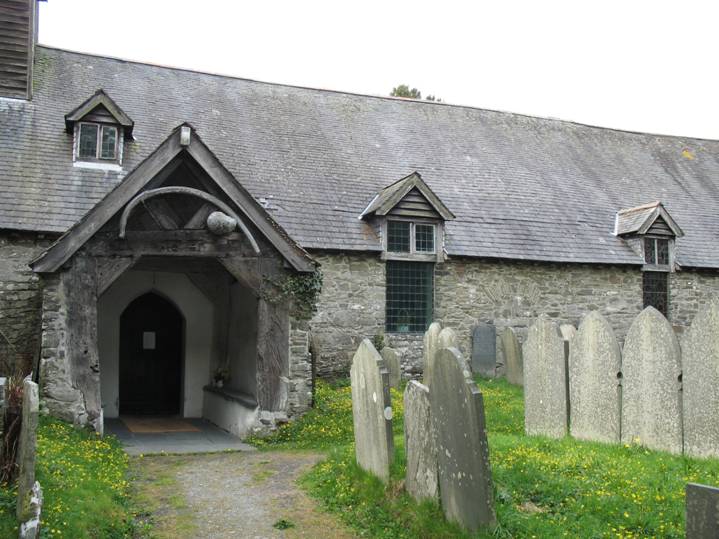
Over the front entrance porch of the church hangs “a curious tusk that was unearthed locally.”
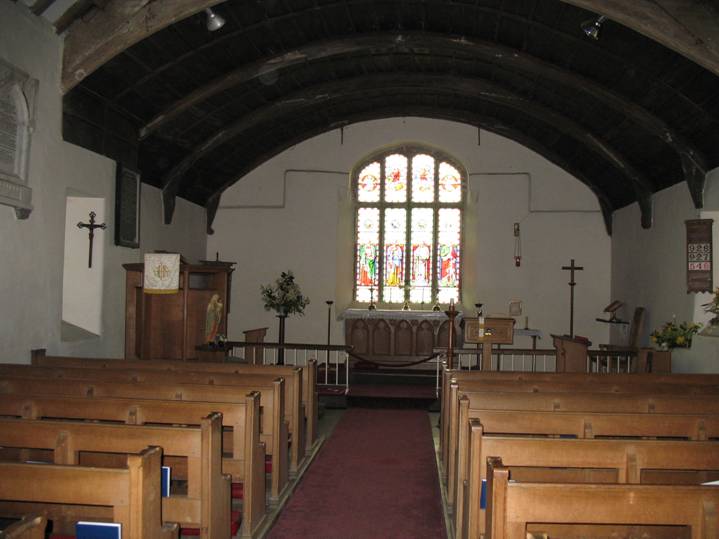
It was not hard to imagine my great-great-great-grandparents, David ROBERTS and Catharine HUMPHREYS, being married here on Friday, 18 May 1827, 180 springs ago. And was this also where they had their son, David, baptized the following October?
This church in an even earlier age was home to a famous rector, an
ordained minister of the Church of England, Dr. John Davies, who was rector here for 40 years, from 1604 until his death in 1644. He was one of Wales’ leading scholars of the late Renaissance, a master of
Welsh, English, Latin, Greek, and Hebrew. A
graduate of Jesus College, Oxford, he authored a Welsh grammar and dictionary
and was believed to have been the main editor and reviser of the 1620 edition
of the Welsh translation of the Bible and the 1621 edition of the Welsh translation of the
Book of Common Prayer. He was
buried in the church chancel under the epitaph, “In memory of his virtue rather than his name.”
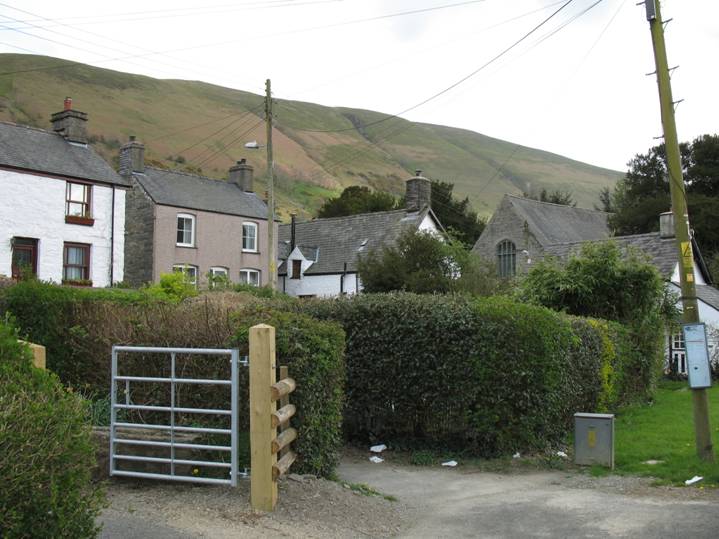
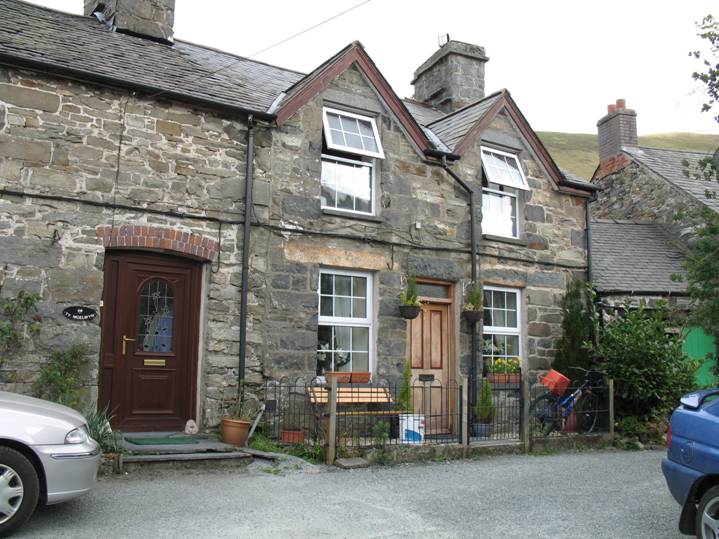
Nearby to the church was a small collection of cottages where my ancestors may have lived. And just up at the nearby roundabout is the Brigands Inn (“Welsh Pub of the Year 2006”).
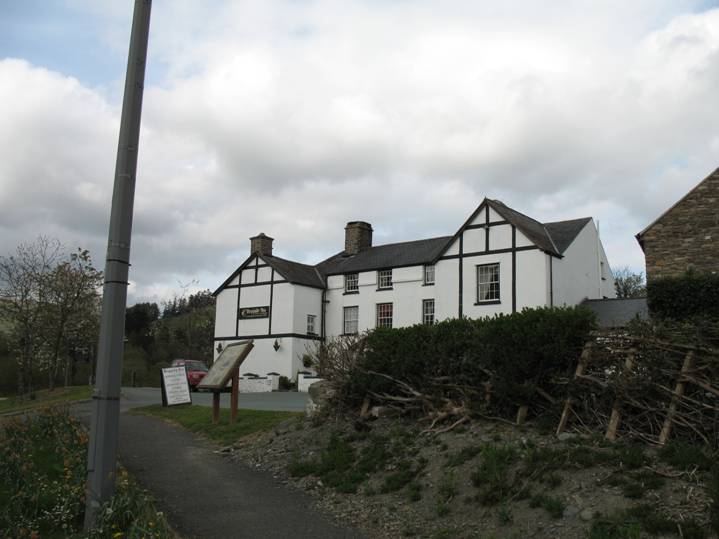
The Brigands Inn at the crossroads, an old 15th-century coaching inn renovated in 2004 (now with nine en-suite bedrooms), was once renowned throughout Wales as the haunt of the “Gwylliaid Cochion Mawddwy” (the Red Bandits of Mawddwy). These were a ferocious band of red-haired outlaws who terrified the locals, ambushed travelers, attacked homes, and stole cattle and sheep. Some said they were local people revolting against the new laws passed in the 16th century by King Henry VIII, when he “annexed” Wales to England and replaced the Welsh laws with English ones. Many of the outlaws were hanged for their crimes (80 gang members were executed in 1554).
Some of my Roberts-Humphrey family members had red hair, too. Evidently so did Queen Elizabeth I.
Links to more information on Mallwyd:
http://www.genuki.org.uk/big/wal/MER/Mallwyd/index.html
http://en.wikipedia.org/wiki/Mallwyd
George Borrow, Wild Wales (See Chapter 76 on Mallwyd): http://www.gutenberg.org/files/648/648-h/648-h.htm
A tourist's look at Mallwyd, Dolgellau, Cader Idris, and environs circa 1809 (from The British Tourists: Or, Traveller's Pocket Companion... by William Fordyce Mavor.
List of HUMPHREYS and ROBERTS baptized at Mallwyd 1813-1837
List of HUMPHREYS and ROBERTS baptized and buried at Mallwyd 1802-1863
HUMPHREYS and ROBERTS in the original Mallwyd church parish book
Welsh cultural traditions
| Back to Catherine Humphrey's page |
| Back to David Roberts' page |
| Home |
Copyright 2007 Michelle Stone. All rights reserved. This information may be used for personal and/or scholarly research only. Commercial use or reproduction of any information contained on this website is strictly prohibited. Information contained on this site is not to appear on any web site on the Internet or in any printed format without written permission. Please link to my site and give appropriate copyright credit. Thanks!